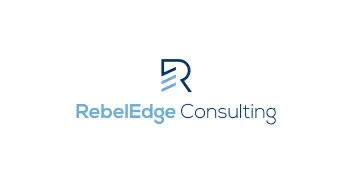
Our Articles
Explore our latest insights and discoveries

Building Accountability and Autonomy for Successful Change Management
Change is inevitable in business, but managing it effectively can be a challenge. Accountability and autonomy are two key elements that can make or break your change management efforts. Accountability means taking responsibility for your actions and outcomes. Autonomy gives employees the freedom to make decisions and take initiative. When combined, these elements create a powerful force for successful organizational change.
Imagine a workplace where everyone owns their tasks and has the freedom to innovate. That's the sweet spot where accountability meets autonomy. It's not just about following orders or having free rein. It's about empowering your team to drive change while staying aligned with company goals.
Studies show that organizations with high levels of accountability and autonomy are 3.5 times more likely to achieve successful change initiatives. This approach leads to increased employee engagement, faster problem-solving, and more innovative solutions. By fostering these qualities, you're not just managing change – you're creating an environment where change becomes a natural part of your company's growth.
Understanding Accountability in Change Management
Accountability is the backbone of successful change management. It's about setting clear expectations and owning the outcomes. When everyone knows their role, magic happens. Clear goals are the first step. They give direction and purpose to the change effort.
Regular progress tracking is crucial. It keeps everyone on the same page and motivated. Measuring results helps identify what's working and what needs adjustment. This data-driven approach ensures the change stays on track.
Taking ownership of outcomes, good or bad, is key. It builds trust and respect within the team. When things go well, celebrate together. When challenges arise, face them head-on. This approach fosters a culture of continuous improvement.
Transparency plays a vital role in accountability. Open communication about goals, progress, and challenges creates a shared understanding. It eliminates confusion and builds trust. When everyone has access to the same information, collaboration improves.
Remember, accountability isn't about blame. It's about learning and growing together. By embracing accountability, teams become more resilient and adaptable. This mindset is essential for navigating the complexities of change management.
The Power of Autonomy in Driving Change

Autonomy is a game-changer in change management. It's about giving employees the power to make decisions. This freedom sparks innovation and boosts engagement. When people have control, they're more likely to embrace change.
Delegating decision-making is key. It shows trust in your team's abilities. Let them choose how to achieve goals. This approach taps into their creativity and problem-solving skills. It also speeds up the change process.
Encouraging initiative is crucial. Create an environment where new ideas are welcome. Reward those who step up with solutions. This fosters a culture of continuous improvement. Employees become active participants in change, not just followers.
Ownership is a powerful motivator. When people feel they own a project or process, they invest more. They take pride in their work and strive for excellence. This sense of ownership drives change from within the organization.
But autonomy isn't a free-for-all. It needs to align with organizational goals. Set clear objectives and boundaries. Provide guidance when needed. This balance ensures autonomy supports the bigger picture.
Studies show autonomy increases job satisfaction and performance. A 2021 Gallup report found that highly autonomous teams are 21% more profitable. They're also 41% more likely to stay with their company. These numbers highlight the impact of autonomy on successful change.
Creating a Culture of Accountability and Autonomy
Building trust is the foundation of accountability and autonomy. Leaders must show faith in their team's abilities. This trust empowers employees to take risks and make decisions. Open communication is key. Regular check-ins and transparent discussions foster a safe environment.
Psychological safety is crucial. Employees need to feel comfortable sharing ideas and concerns. Encourage diverse viewpoints and treat mistakes as learning opportunities. This approach promotes innovation and problem-solving.
Effective feedback loops are essential. Implement systems for regular, two-way feedback. This helps align individual efforts with organizational goals. It also provides opportunities for continuous improvement.
Adaptive leadership skills are vital in this culture. Leaders must be flexible and responsive to changing needs. They should guide rather than control, allowing team members to find their own solutions.
Investing in employee development is non-negotiable. Provide training and resources to enhance skills and knowledge. This investment shows commitment to employee growth and enables greater autonomy.
Aligning individual autonomy with organizational objectives is a delicate balance. Clearly communicate the company's vision and goals. Then, allow employees to determine how best to contribute. This approach harnesses creativity while ensuring everyone moves in the same direction.
Remember, creating this culture takes time and effort. It requires consistent commitment from leadership and active participation from all team members. The result is a more engaged, innovative, and resilient organization ready to tackle any change.
Practical Examples of Accountability and Autonomy in Action
Let's dive into real-world examples of accountability and autonomy in action. These case studies show how companies successfully implemented these principles during major changes.
A software company decided to overhaul its project management system. They empowered team leaders to choose their preferred tools within a set budget. This autonomy led to increased buy-in and smoother adoption. Team leaders were accountable for training their teams and meeting project deadlines. The result? A 30% increase in project completion rates within six months.
A major retail chain embarked on a digital transformation journey. They created cross-functional teams with representatives from various departments. These teams had the autonomy to propose and implement digital solutions. They were held accountable through weekly progress reports and customer satisfaction metrics. This approach led to a 25% increase in online sales and a 15% improvement in customer retention.
Both cases highlight key lessons. First, trust your employees. Give them the freedom to make decisions and own their outcomes. Second, set clear expectations and measurable goals. This ensures accountability without micromanagement. Lastly, foster open communication. Regular check-ins and feedback sessions keep everyone aligned and motivated.
Remember, implementing accountability and autonomy isn't a one-size-fits-all approach. Tailor these principles to your organization's unique culture and needs. The results can be transformative, driving successful change and fostering a more engaged workforce.
Overcoming Common Misconceptions
Autonomy doesn't mean free rein. It's about empowering employees within defined boundaries. Many leaders fear losing control, but autonomy actually increases engagement and productivity. A study by the University of Birmingham found that employees with higher autonomy reported better job satisfaction and well-being.
Accountability isn't about punishment. It's a tool for growth and improvement. When employees take ownership of their work, they're more likely to learn from mistakes and celebrate successes. The Harvard Business Review reports that organizations with a culture of accountability are 2.5 times more likely to experience high performance.
These principles aren't one-size-fits-all. They can be tailored to fit any organization's unique needs. Start by identifying areas where increased autonomy could benefit your team. Then, establish clear expectations and metrics for accountability. Remember, it's a journey, not a destination.
Implementing accountability and autonomy doesn't happen overnight. It requires patience, trust, and consistent effort. But the rewards are worth it. Companies that successfully balance these principles see increased innovation, employee satisfaction, and overall performance.
Latest Developments and Trends
Change management is evolving rapidly. Psychological ownership is gaining traction. This concept goes beyond traditional accountability. It fosters a deep personal connection to work and outcomes. Employees who feel this connection are more likely to drive change.
Remote work has transformed accountability and autonomy. Leaders must adapt their strategies. Trust becomes paramount in distributed teams. New digital tools are emerging to support this shift. These tools facilitate transparent communication and progress tracking.
Artificial intelligence is reshaping change management. AI-powered analytics can predict potential roadblocks. This allows leaders to proactively address issues. Personalized learning platforms are enhancing employee autonomy. They provide tailored resources for skill development.
Agile methodologies are influencing accountability practices. Short feedback loops and iterative processes are becoming the norm. This approach allows for quick course corrections. It also empowers teams to make decisions autonomously.
The focus on well-being is impacting change initiatives. Leaders are recognizing the link between employee health and successful change. Wellness programs are being integrated into change management strategies. This holistic approach supports both accountability and autonomy.
Expert Tips for Implementation
Start small with pilot projects. This approach lets you test the waters without risking too much. Choose a team or department that's open to change. Give them clear goals and the freedom to achieve them. Watch closely and learn from their successes and failures.
Leaders, become facilitators, not directors. Your role is to guide, not control. Provide resources and remove obstacles. Ask questions that spark creativity. Encourage your team to find solutions on their own. This builds confidence and fosters innovation.
Remember, nurturing accountability and autonomy is an ongoing process. It's not a one-time fix. Regularly check in with your team. Celebrate wins, big and small. Address challenges openly and collaboratively. Create a safe space for feedback and ideas.
Invest in training and development. Equip your team with the skills they need to thrive in an autonomous environment. This might include decision-making workshops or conflict resolution training. The more capable your team feels, the more they'll embrace accountability.
Be patient and persistent. Change takes time. Don't expect overnight miracles. Stay committed to the process, even when faced with setbacks. Your consistency will inspire trust and motivate your team to keep pushing forward.
Take Action
Leaders, it's time to take action. Start small, be patient, and lead by example. Encourage open communication, provide necessary resources, and celebrate both successes and learning experiences. Remember, building accountability and autonomy is an ongoing journey. Embrace it, and watch your organization thrive through change.


LinkedIn
Youtube